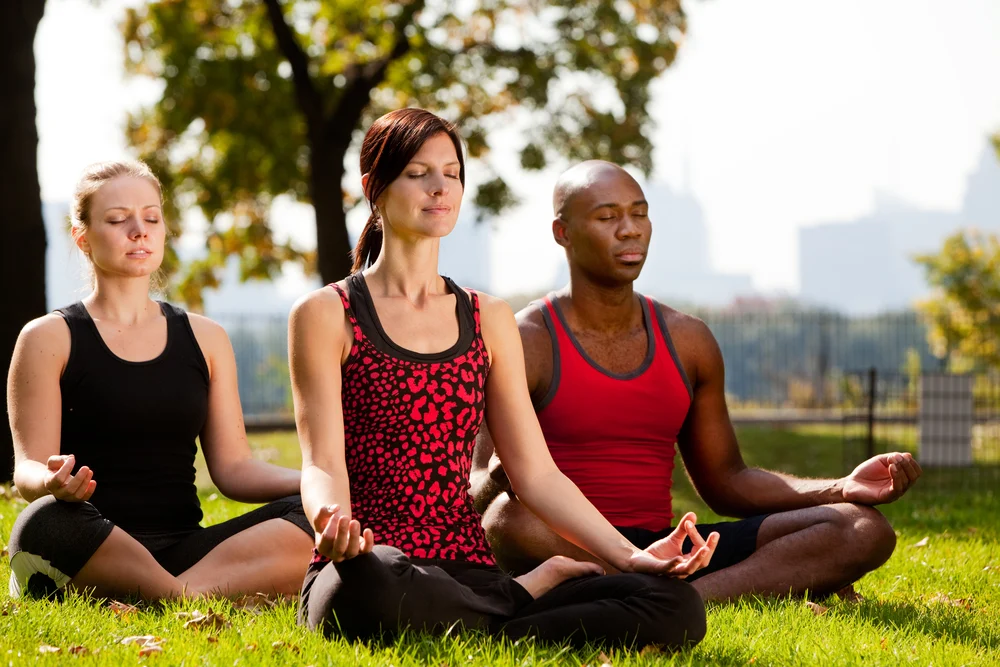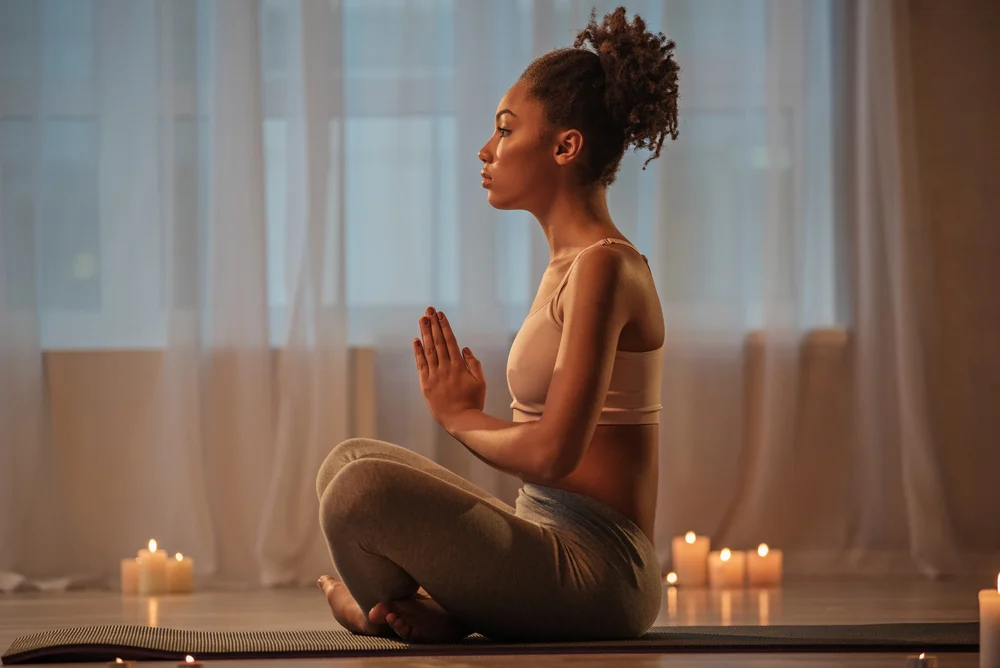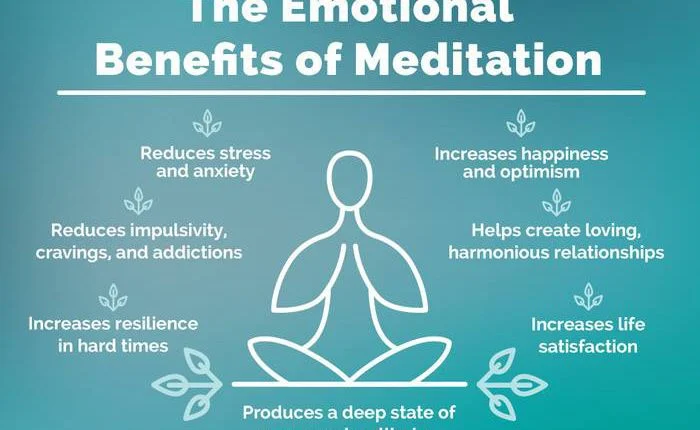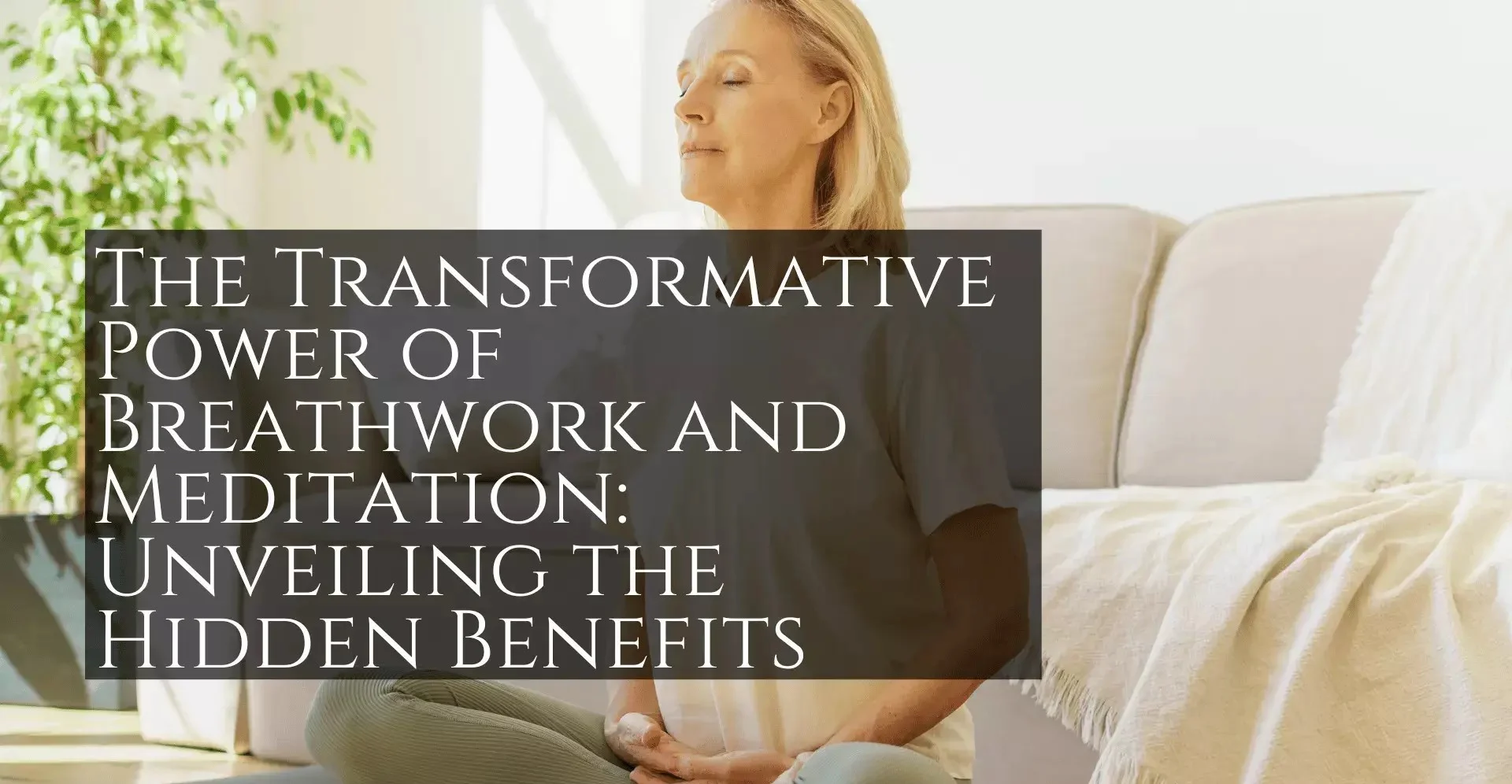In today’s fast-paced world, mental health challenges like anxiety, depression, and chronic stress affect millions of people. While traditional treatments remain important, yoga offers a natural, accessible approach to achieving mental harmony through proven breathing techniques and meditation practices.
What Is Yoga for Mental Health?

Yoga for mental health combines physical postures (asanas), controlled breathing (pranayama), and meditation to create a holistic approach to emotional wellness. This ancient practice works by activating the parasympathetic nervous system, reducing cortisol levels, and promoting the release of mood-enhancing neurotransmitters like serotonin and GABA.
Mental Health Benefits of Yoga and Meditation
Stress Reduction
Regular yoga practice significantly lowers cortisol levels, helping your body manage stress more effectively. Deep breathing exercises activate the vagus nerve, triggering the body’s relaxation response.
Anxiety Relief
Studies show that yoga can reduce anxiety symptoms by up to 50% in regular practitioners. The combination of mindful movement and controlled breathing helps break the cycle of anxious thoughts.
Depression Management
Yoga increases BDNF (brain-derived neurotrophic factor), which supports brain health and can alleviate depressive symptoms. The practice also provides a sense of accomplishment and community connection.

Improved Sleep Quality
Gentle yoga sequences and meditation before bedtime can improve sleep quality by calming the nervous system and reducing racing thoughts.
Key Breathing Exercises for Mental Wellness
4-7-8 Breathing Technique
- Inhale for 4 counts
- Hold for 7 counts
- Exhale for 8 counts
- Repeat 4-6 times
Box Breathing
- Inhale for 4 counts
- Hold for 4 counts
- Exhale for 4 counts
- Hold empty for 4 counts
Alternate Nostril Breathing (Nadi Shodhana)
This balancing technique helps reduce anxiety and improve focus by harmonizing the left and right hemispheres of the brain.
Simple Home Remedies and Practices

Daily 10-Minute Routine
- Minutes 1-3: Gentle stretching and body awareness
- Minutes 4-7: Breathing exercises
- Minutes 8-10: Silent meditation or mindfulness
Creating Your Sacred Space
Designate a quiet corner in your home with a yoga mat, comfortable cushion, and perhaps some calming essential oils like lavender or eucalyptus.
Progressive Muscle Relaxation
Combine yoga poses with systematic tension and release of muscle groups to reduce physical manifestations of stress.
Potential Side Effects and Precautions
While yoga is generally safe, some considerations include:
- Physical limitations: Modify poses for injuries or mobility issues
- Emotional release: Some people experience intense emotions during practice
- Dizziness: Can occur with certain breathing exercises if done incorrectly
- Overstretching: Listen to your body and avoid forcing poses
Always consult healthcare providers if you have serious mental health conditions or physical limitations.

How to Avoid Common Mistakes
Start Slowly
Begin with 10-15 minute sessions rather than hour-long classes to build sustainable habits.
Focus on Breath Over Perfection
Proper breathing is more important than achieving perfect poses.
Consistency Over Intensity
Regular short practices are more beneficial than occasional long sessions.
Seek Qualified Instruction
Learn from certified yoga instructors, especially for breathing techniques and meditation guidance.
Building a Sustainable Practice
Set Realistic Goals
Aim for 3-4 sessions per week initially, gradually increasing as the practice becomes habitual.
Track Your Progress
Keep a simple journal noting mood changes, sleep quality, and stress levels.
Join Communities
Consider online classes, local studios, or virtual groups for support and motivation.
Frequently Asked Questions

Q: How quickly can yoga improve mental health?
A: Many people notice reduced stress and improved mood within 2-4 weeks of regular practice. Significant changes in anxiety and depression symptoms typically occur after 8-12 weeks of consistent practice.
Q: Can yoga replace therapy or medication for mental health conditions?
A: Yoga is a complementary practice that works well alongside professional mental health treatment. It should not replace prescribed medications or therapy without consulting your healthcare provider.
Q: What’s the best time of day to practice yoga for mental health?
A: Morning practice can set a positive tone for the day, while evening sessions help with relaxation and sleep. Choose a time you can maintain consistently.
Q: Do I need special equipment to start?
A: No expensive equipment is needed. A yoga mat, comfortable clothes, and a quiet space are sufficient to begin your practice.
Q: How is yoga different from regular exercise for mental health?
A: Unlike traditional exercise, yoga combines physical movement with mindfulness, breathing techniques, and meditation, creating a more comprehensive approach to mental wellness.
Q: Can children and seniors practice yoga for mental health?
A: Yes, yoga can be adapted for all ages. Chair yoga works well for seniors, while playful poses and breathing games are perfect for children.
Conclusion
Yoga offers a powerful, natural approach to mental health that combines ancient wisdom with modern scientific understanding. By incorporating breathing exercises and meditation into your routine, you can develop greater emotional resilience, reduce stress, and cultivate lasting mental harmony. Start small, stay consistent, and remember that the journey toward mental wellness is a gradual, rewarding process.
Remember: While yoga is an excellent complement to mental health care, always consult with healthcare professionals for serious mental health concerns.








